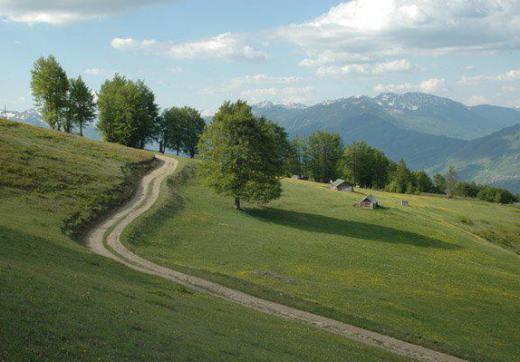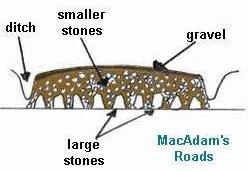Tarmacadam, also known as tarmac, is a portmanteau abbreviation of tar-penetration macadam. Tarmacadam was used to pave roads and other large, flat surfaces, and although tarmacadam is not used to pave anymore due to the introduction of asphalt, the word tarmac is still used in reference to airport runways and some roads in many parts of the world, especially in former British colonies. Tarmacadam was patented by E. Purnell Hooley in 1901, who later sold the invention to Wolverhampton MP, which relaunched the product with great success in 1905. Tarmac Limited, the tarmacadam arm of Wolverhampton, remains a heavy player in British heavy building materials.
Tarmacadam is a retooling of macadam, a type of road construction invented by John Loudon McAdam in the early 19th century. Macadamized roads are made from three layers of aggregate materials decreasing in size, with the bottom layer being the largest and heaviest. Each layer is pressed with a roller to flatten it and to force the materials to bond together between layers. The resulting pavement was strong and drained easily, but when motor vehicles became widespread, macadam was unable to stand up to the heavy wear and began to disintegrate.

Tarmacadam arose as a way to seal macadam, preventing roads from breaking apart under heavy use and minimizing dust. Tarmacadam is created by spraying tar along a macadamized road to bind it together further and pressing the surface with a roller to drive the tar deep into the macadam. Tarmacadam roads were highly durable and still exist in some nations, although they are slowly being replaced by asphalt concrete, made with petroleum byproducts.

Some roads on the Eastern coast of the United States have their original tarmacadam surfaces, and many residents of the Eastern Seaboard still refer to roads as “macadam,” even if they have since been resurfaced with asphalt. Many developing nations have also retained their tarmacadam roads and runways. Tarmacadam can be repaired by scarring and resurfacing the top layer of small materials, and this is still done in some parts of the world to avoid the more costly complete replacement that asphalt paving involves.
Ever since she began contributing to the site several years ago, Mary has embraced the exciting challenge of being a About Mechanics researcher and writer. Mary has a liberal arts degree from Goddard College and spends her free time reading, cooking, and exploring the great outdoors.

